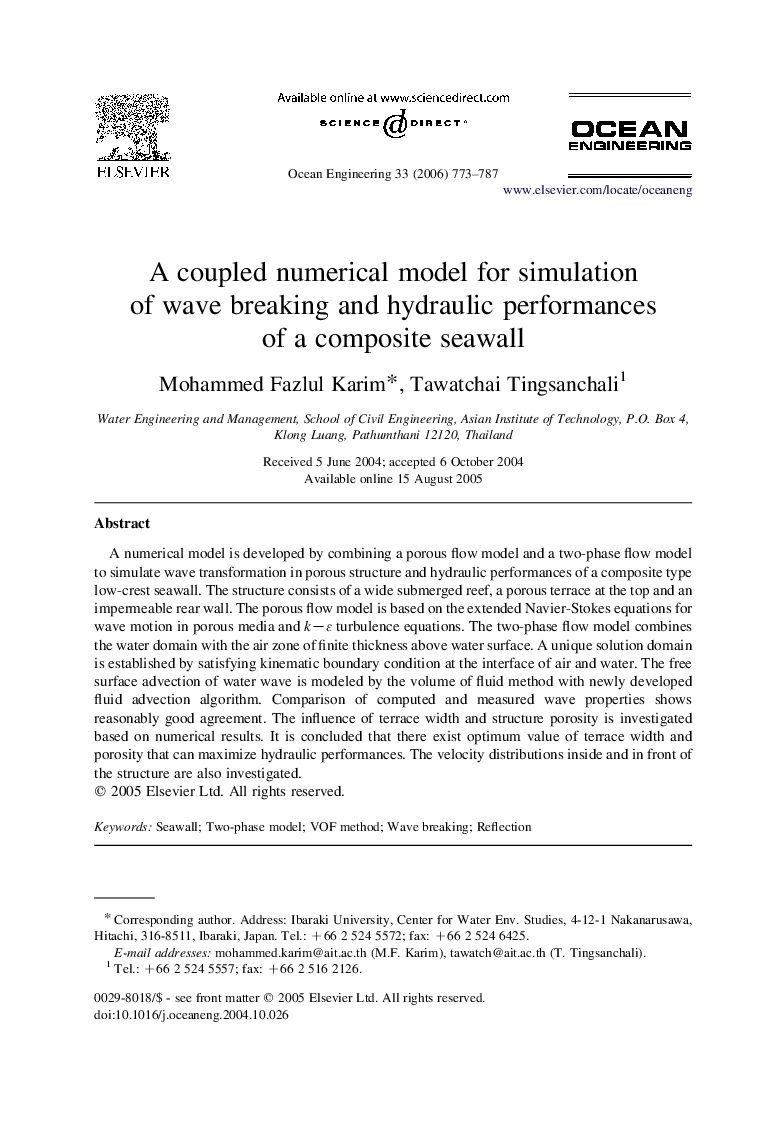| Article ID | Journal | Published Year | Pages | File Type |
|---|---|---|---|---|
| 1727407 | Ocean Engineering | 2006 | 15 Pages |
Abstract
A numerical model is developed by combining a porous flow model and a two-phase flow model to simulate wave transformation in porous structure and hydraulic performances of a composite type low-crest seawall. The structure consists of a wide submerged reef, a porous terrace at the top and an impermeable rear wall. The porous flow model is based on the extended Navier-Stokes equations for wave motion in porous media and kâε turbulence equations. The two-phase flow model combines the water domain with the air zone of finite thickness above water surface. A unique solution domain is established by satisfying kinematic boundary condition at the interface of air and water. The free surface advection of water wave is modeled by the volume of fluid method with newly developed fluid advection algorithm. Comparison of computed and measured wave properties shows reasonably good agreement. The influence of terrace width and structure porosity is investigated based on numerical results. It is concluded that there exist optimum value of terrace width and porosity that can maximize hydraulic performances. The velocity distributions inside and in front of the structure are also investigated.
Related Topics
Physical Sciences and Engineering
Engineering
Ocean Engineering
Authors
Mohammed Fazlul Karim, Tawatchai Tingsanchali,
